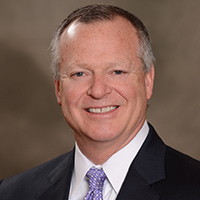COVID-19: How healthcare leaders help their organizations be more consumer-oriented coming out of the crisis

- As the nation seeks to enter the “reconstruction” phase of recovery from the COVID-19 pandemic, healthcare leaders should strive to do better than that.
- Although some stakeholders took steps to improve the patient financial experience during the pandemic, issues with billing and a lack of transparency remained prevalent.
- Providers and health plans should build on improvements such as easy online registration via smartphone.
Note: Joe Fifer will explore this topic in depth during his presentation June 24 at HFMA’s Digital Annual Conference. His session, “Your Challenge, Our Mission,” kicks off the event, which takes place over six days in June, July and August.
Reality is starting to set in: The COVID-19 pandemic is far from over. The novel coronavirus is going to be part of our lives for a while, most likely extending into 2021.
As a nation, we have most likely entered what is known as the disillusionment phase of dealing with a disaster. In this phase, people start to realize that there are limits to disaster assistance. Initial optimism fades regarding prospects for a quick recovery. It gets harder to foster constructive problem-solving and innovative thinking. And it gets easier to dwell on what went wrong.
The challenge for all of us, especially healthcare leaders, is to muster the energy to move beyond disillusionment to the final phase of disaster recovery, known as reconstruction. That’s when individuals and communities begin to assume responsibility for rebuilding their lives.
When it comes to the patient financial experience, however, the concept of reconstruction doesn’t go far enough. Our goal should not be just “getting back to normal,” as tempting as that may seem. Normal, or business as usual, translates to B2B-centered billing and payment processes, limited price transparency and lots of hassles for consumers.
Putting recent experiences in perspective
Has the COVID-19 patient financial experience been any better than the typical business-as-usual scenario? Congress acted quickly to pass legislation requiring waivers for testing-related patient cost-sharing. Health plans fast-tracked implementation efforts. Telehealth services exploded in volume. Nevertheless, plenty of unresolved issues and possible exceptions remained (notably for self-funded ERISA plans).
As a result, many patients came up against the same financial uncertainties they had experienced during previous healthcare encounters. Some reportedly delayed or even skipped COVID-19 testing or treatment because of financial concerns, an outcome that policymakers had sought to avoid.
Recognizing that it would take time to sort out payer-specific benefits and coverage, a few providers chose to pause patient billing for COVID-19. Others, joined by health plans, added relevant billing and payment information to their websites. Responses like these helped mitigate patient concerns.
Yet, the upshot of the COVID-19 patient financial experience is likely to be high-profile anecdotes about unexpected bills, familiar tales of billing hassles and renewed calls for price transparency.
Building on improvements
Many aspects of the patient experience have been redesigned in light of COVID-19. For example, some health systems have enabled online check-in and registration by smartphone — in some cases for patients sitting in their cars in the ED parking lot, thereby reducing wait times in the facility in a similar manner as busy restaurants often do.
Now is the time to build on those kinds of improvements and go beyond them to prioritize developing a comprehensive, consumer-centric patient financial experience. HFMA offers resources for improving the patient financial experience as well as technical guidance and online community support to help members manage various finance-related COVID-19 challenges.
Reinventing the patient financial experience may sound daunting, given the immediate challenges of reconstruction and the uncertain timeline for recovery. It’s easy to get discouraged. But if leaders allow themselves to get stuck in the disillusionment phase, the virus wins. This is our opportunity to “build back better.” Let’s make the most of it.





